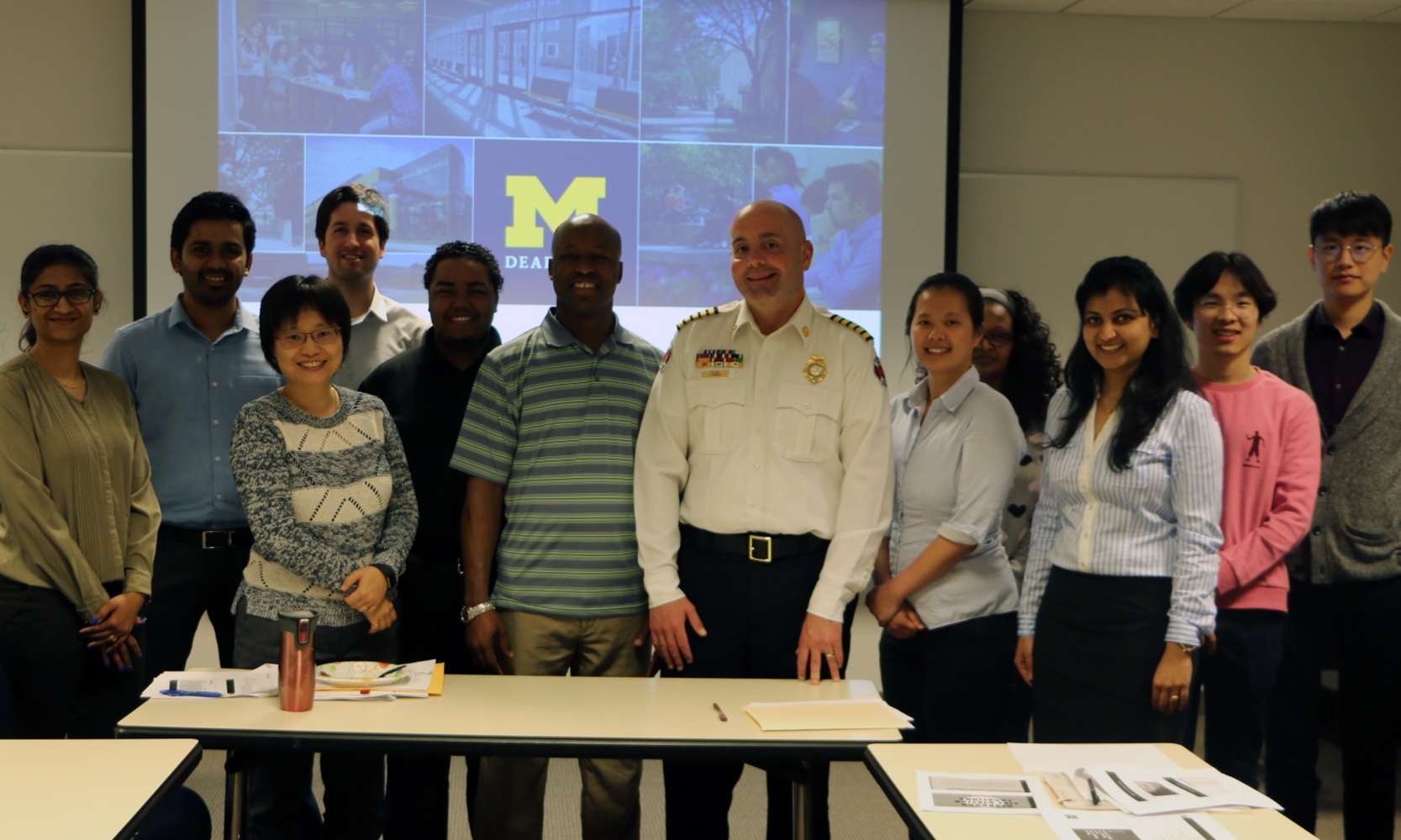
College of Business students are helping fight fire with … data analysis.
Operations Management Associate Professor Yi-Su Chen’s OM 661: Supply Chain Logistics students are working with the Dearborn Fire Department (DFD) to help the public safety organization choose a best location for an additional fire station in west Dearborn, based on years of data sets.
Taking nearly 15,000 fire reports from 911 calls—with incident type, dates and locations—Chen’s graduate students have analyzed real data and made a proposal to the DFD.
“I want to connect my classroom to the real world, and the fire department was interested in our help when I reached out. I spent years in industry before teaching and, in my opinion, it is important for students to apply their classroom knowledge to a real problem,” said Chen, who previously worked in various supply chain positions with Accenture, Unilever, Hewlett Packard and Agilent.
Dearborn Fire Department Chief Joseph Murray came to Chen’s class to talk about the department—which has five stations providing service to approximately 110,000 residents, covering 27.3 square miles. Murray told the students they are evaluating station locations and are interested in placing an additional station in west Dearborn. Currently, the single station in that area covers 70 percent of DFD’s call volume.
“Because of the uneven distribution, response times are longer on average in that area,” Chen said. “So Chief Murray asked our class to find the optimal location, based on data.”
Business analytics graduate student Omar Bah said the 11-person class worked extensively with the DFD-supplied data—cleaning, organizing, mapping and analyzing it.
From their research and analysis, students identified three site locations and recommendations to Murray—two of those sites would need new buildings, one next door to the current Michigan Avenue station and a second on Outer Drive; a third site located two miles away in a former library building at Telegraph and Princeton, would need refurbishment. Locations were evaluated based on proximity to incidents, estimated response times and cost to build/renovate.
Business analytics graduate student Jun-Qi Min said he appreciated how the class gave him the opportunity to use GIS mapping software and to create an algorithm for helping find an optimal solution. He used the P-median model—a method that looks at the customer demand and distance between that demand and the candidate facility—to assess the three proposed sites identified from the data map research.
“I evaluated the existing network design for the local fire system and then compared it to what the network design would look like using each of the three possible locations for the new station,” he said. “All three showed a faster response time; I believe any of the three locations would be a good site for a fire station.”
In addition to giving a presentation to the DFD chief, Bah and Min recently presented their findings at UM-Ann Arbor’s Michigan Data Science Research Forum and at UM-Dearborn’s Engagement Day.
Chen said she reaches out to organizations like the Dearborn Fire Department to offer research assistance on a problem of their choice; in return, her students get real world experience.
Chen said after the final presentation, Murray requested a copy of the findings. “He was pleased with the students’ report,” she said. “He now has numbers, data, to explain locations.”
Bah said this experience is beneficial to his professional future, but he’s even more pleased with it on a personal level.
“If my education can help create community change, I will be very happy,” he said. “I enjoy this field because I find it interesting and it touches all aspects of life; but to think our work may trigger community improvement is very satisfying.”





